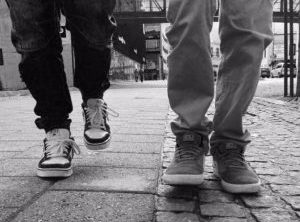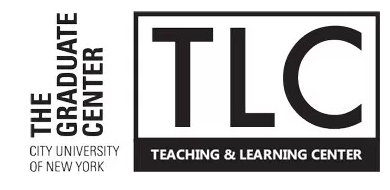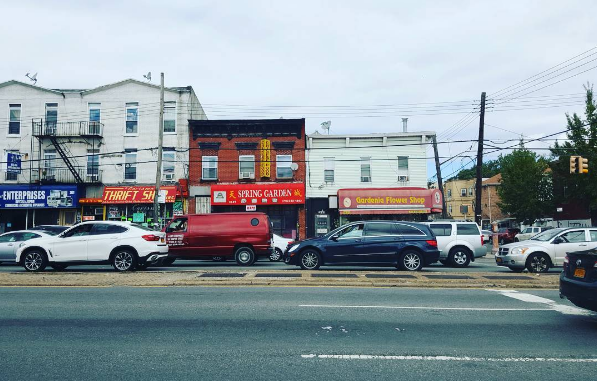For 8 of the 9 semesters that I’ve taught, I have taught the 101 course in the Urban Studies Department at Queens College. Entitled ‘Poverty and Affluence’, this class introduces students to the history and various manifestations of inequality (economic, social, political, material, experiential and more) as they intertwine with urban development. Because we live, work and/or learn in (or in close proximity to) New York City, and because NYC is such a well-researched and unequal place, much of the course material and our conversations about inequality focus specifically on the development of NYC. This is both useful and challenging.
The proximity of course material to the everyday lives of my students helps them take it in, connect with it and think critically about it. However, this proximity can be intimidating as well – because the world can seem like a very dark and threatening place when you’re wrapping your head around how inequality has and is taking place in the context of your everyday life. When things are intimidating, we develop coping mechanisms – and students in my class developed a myriad of them: from wanting to learn more or get more involved in social justice and community building activities, to distancing themselves from or denying or struggling to accept course material (and relatedly, our socio-political reality).
The need for coping quickly became apparent, and I attempted to find ways of encouraging students to go down the path of more engagement rather than less. This took many forms: from analytically reflective essay assignments, to field trips and class outings, to modeling the ways I understand and cope and struggle with the course-related realities that define my own life, to sharing information on intellectual and activist events around the city. Most recently, I have been experimenting with using a variety of digital tools in the classroom (i.e WordPress, Googe Drive, StoryMaps, JSTimeline and more). As a whole, these efforts aim(ed) to encourage students to engage course material in and beyond the classroom; to both understand material in the context of the class, but also in the context of their lives, and to (re)imagine their positionality in and disposition to our city/world. My ambition with using a select set of digital tools in the classroom went farther; it was undergirded by a desire to move students beyond engaging and (re)imagining, and into the realm of enacting (or actively experimenting with) alternative ways of being and seeing and knowing and sharing.
I have documented my experimentation with digital technologies in the classroom at length elsewhere, but in short, over the course of three semesters I involved students in a community-based research project, asked them to engage in and lead public online discussions and asked them to create digital public education tools on a topic related to course material. We also started cooperatively making other resources including an urban dictionary and a library of NYC-based social justice organizations. In general, these assignments and activities often called on students to coordinate with and support one another, and otherwise co-learn course material. Moreover, I hosted the majority of course information, readings, some class discussions and the resources we created on a public WordPress site. Thus when taken as a whole, someone could feasibly, ‘take’ our Urban Studies 101 course by going through the readings, assignments and lecture slides and following along with our online class discussion.
This semester I’ve started transitioning away from teaching, and so while I’ve continued experimenting with these tools and aims in the one class I am teaching this semester, I’ve also been trying to unpack (and document, hence this post) my pedagogical praxis so that when I return to teaching in the future I know where I’m starting from.
A Pedagogy of Prefiguration
In reflecting on my pedagogy, the word prefiguration comes to mind. Prefiguration, sometimes referred to as prefigurative politics, describes future-oriented socio-political formations or collectives that reorganize social, material, economic and political relationships in a preferred and counter-hegemonic way. This reorganization is enacted through coordinated embodiment by members of the collective (see Yates, 2015 or Trott, 2016 for references). The encampments of Occupy are perhaps the most accessible example of prefiguration – where, in the seized spaces, protesters reclaimed public space for public discourse, enacted forms of horizontal and deliberative democracy, and in some cases developed local economies based on bartering and the sharing of services rather than monetary exchange, matching their notorious chant, ‘this is what democracy looks like’. However, prefigurations do not always resemble the direct-political-action structure of Occupy. Permanent or semi-permanent collectives, organizations, or institutions that inherently – though more or less intentionally – organize individuals into collective embodiments of counter hegemonic logics and modes of relationality, such as community land trusts, also count (Hackett, 2017).
Instead of structure, the main component of prefiguration is the idea of becoming by doing and being; it is coordinated enactment that makes action prefigurative. In addition, 5 other characteristics have been identified by a scholar researching and comparing a set of prefigurations in Barcelona (Yates, 2015):
- active experimentation with everyday practices and projects;
- engagement with and critical reflection on political perspectives and ideas as a way of reimagining practices and/or reorganizing social relations and guiding experimentation;
- establishing new collective norms that draw on political and social ideals and practices of experimentation;
- develop interventions in material environments and social orders;
- and diffuse ideas beyond immediate the group.
To a large extent, these criteria map onto the values, practices, assignments, conversations and activities that flesh out my courses. We have critical, reflective discussions about the policies that have and are forming the context of our everyday lives (i.e. changes in labor and housing policy at the national and municipal level); and these conversations take place in ways that are both in-person and amongst ourselves and public and transparent and shared and otherwise diffuse. The use of various digital technologies that have supported the public nature of our class, class discussions, and the resources we’ve created can be understood as an intervention in the material and social – and digital – orders that define our education, university and broader lives. Through the practice of public writing and the community structure of the classroom, we are enacting an alternative set of collective norms and experimenting with non-hegemonic ways of being and doing and becoming and relating and learning in the world. In sum, we as a community are collectively prefiguring a way of learning and being and relating vis-a-vis each other, the university, and the public that contrasts with the hegemonic logics of the neoliberal academy and the neoliberal political economy more generally.
For me, the significance of prefiguration in the classroom – or ‘a pedagogy of prefiguration’ – lies in staving off despair and disengagement by providing students with an outlet for action – a sense of not just taking in course material, but of sharing it in meaningful and loosely productive ways. In this way, a ‘pedagogy of prefiguration’ approach is related to the transformative ‘pedagogy of hope’ advocated for by Paulo Freire (1994) and bell hooks (2003). Despair, each scholar argued, was ‘the greatest threat’. Beyond interrupting learning and education, as hooks notes, “When despair prevails we cannot create life-sustaining communities of resistance”, a pedagogy of hope has significance for society at large as well (2003, p12). Similarly, a pedagogy of prefiguration is not only centered on learning in the classroom, but with engaging in and being active, supportive and critical members of society and prefiguring a certain kind of citizenry. Through engaging one another and writing for a public audience, students are engaging these skills while also experimenting with alternative ways of being and doing and becoming and relating that extend well beyond the classroom. Thus, as a final point of comparison between the two pedagogical perspectives, ‘hope’ is certainly at the center of each approach, however, the heart of a pedagogy of prefiguration is embodied hope, or hope that both drives and is supported by action on the part of the student.
Concluding Thoughts
After having written this, I realize this sounds Grand and ideal. And it is. Of course there were many uneasy and challenging moments throughout this process, which I have and am in the process of reflecting on elsewhere. However, among the collection of posts I’ve composed, this one intends to begin to theorize my pedagogy. In part, this is because my teaching is coming to an end (for now), and this reflection can serve as a starting point in the future. Perhaps moreso, however, because I haven’t seen other pedagogical frames similar to this, at the same time that I think many of us are engaging similar values to similar ends or similar tools (i.e. digital technologies) to similar or unknown ends. Thus, this perspective stands as a point of discussion, around which a conversation about the unique particulars of how similar pedagogical styles are enacted or similar tools deployed and what challenges and tips we have in this endeavor can be had.
 The Walking in My Shoes (WIMS) Project is an open digital pedagogy project that began as a way to: 1) more deeply involve the students in my class with the issues we were discussing, 2) publicize the the conversations that took/take place in my public university setting, 3) to stretch and experiment with my pedagogy. In sum, I created specific assignments over the course of 3 semesters that aimed to achieve these goals.
The Walking in My Shoes (WIMS) Project is an open digital pedagogy project that began as a way to: 1) more deeply involve the students in my class with the issues we were discussing, 2) publicize the the conversations that took/take place in my public university setting, 3) to stretch and experiment with my pedagogy. In sum, I created specific assignments over the course of 3 semesters that aimed to achieve these goals.




